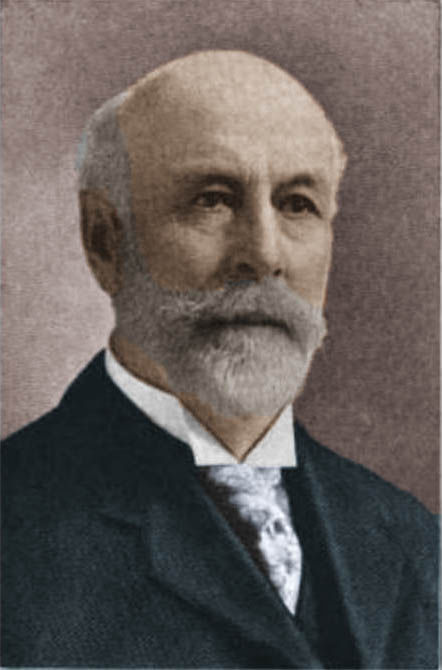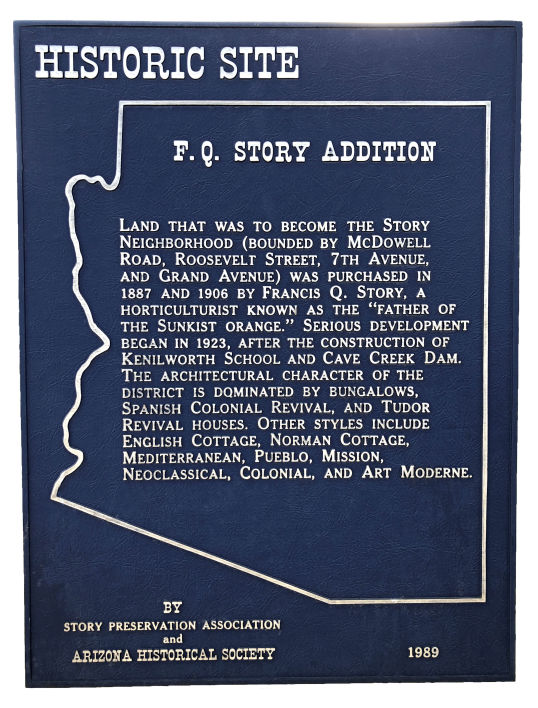In 1887, Francis Quarles Story, a Boston wool merchant whose ill health had taken him to California a decade before, purchased the acreage that is today the F.Q. Story Historic District. He had settled in Los Angeles County, studied the cultivation of citrus, planted orange groves, and is credited with founding the national advertising campaign that made the Sunkist Orange famous. Active in many educational and conservation endeavors, F.Q. Story was a director and president of the Los Angeles Chamber of Commerce and a tireless booster of commercial and industrial enterprises in California and Arizona. Story and other prominent southern California landowners expanded into the Salt River Valley of Arizona in the late 1880s, investing in land and promoting both agricultural and townsite development. Although he never lived in Phoenix, Story was involved in numerous projects, such as the design and construction of the 100-footwide Grand Avenue thoroughfare in 1887 and the subsequent building of its streetcar line. In the early 1900s, Story was influential in the founding of the Grand Avenue and University Additions, but their development was disappointing. In spite of having announced in 1910 plans to subdivide the 200-acre parcel which would become the Story neighborhood, he sold the entire parcel to the Phoenix firm of Jordan, Grace and Phelps in 1919.

